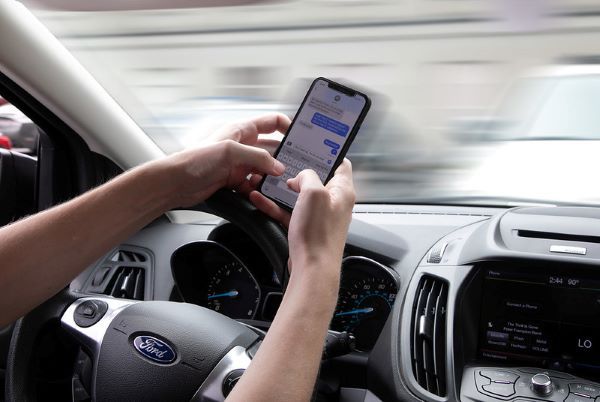Photo via Flickr/Virgina DOT.
The District of Columbia and 48 states now have hand-held cell phone bans while driving.
In 2018, 2,841 people were killed in motor vehicle crashes involving distracted drivers, according to the Centers of Disease Control and Prevention (CDC). Among those deaths, the 20-29 age group had the highest number of fatalities.
The 2,841 deaths included the fatalities of 506 nonoccupants: pedestrians, bicyclists, and others, Bankrate recently reported.
Distracted driving caused 938,000 driving accidents in 2018, according to data from the U.S. Department of Transportation (DOT) and the National Highway Traffic Safety Administration (NHTSA). With 6.7 million car crashes taking place in 2018, distracted driving contributed to 15% of that total number.
According to data from the last 10 years, between 14% and 17% of all crashes are due to distracted driving. To reduce the occurrences of distracted driving, 48 states and the District of Columbia now have hand-held cell phone bans while driving.
Distracted driving can include visual distraction (your eyes move away from the road), auditory distraction (sound causing your attention to be taken away from driving), manual distraction (your hands move away from the steering wheel), and cognitive distraction (your mind wanders and you are no longer focused on driving).
Cell phone use can be a manual, cognitive, and visual distraction for drivers. For example, texting can take your eyes off the road for about five seconds – the length of a football field when you are driving 55 mph on the road. Texting increases the risk of a car accident by 23 times, according to a study by the Virginia Tech Transportation Institute.
While cell phone usage (and texting) has led to car accidents and fatalities, there are other distractions as dangerous when driving, including drowsiness, smoking, other passengers, a moving object in the vehicle, adjusting the radio or air conditioning, reaching for a device or item in the vehicle, eating and drinking, and daydreaming.
Originally posted on Business Fleet
Source: https://www.automotive-fleet.com
CUT COTS OF THE FLEET WITH OUR AUDIT PROGRAM
The audit is a key tool to know the overall status and provide the analysis, the assessment, the advice, the suggestions and the actions to take in order to cut costs and increase the efficiency and efficacy of the fleet. We propose the following fleet management audit.




